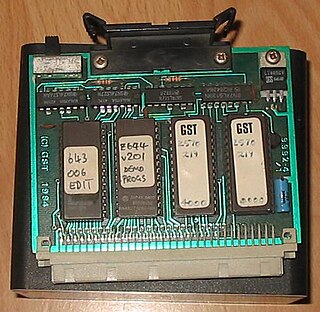 W
W68K/OS was a computer operating system developed by GST Computer Systems for the Sinclair QL microcomputer.
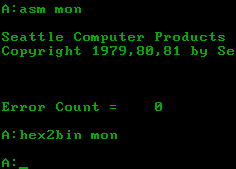 W
W86-DOS is a discontinued operating system developed and marketed by Seattle Computer Products (SCP) for its Intel 8086-based computer kit. Initially known as QDOS, the name was changed to 86-DOS once SCP started licensing the operating system in 1980.
 W
WArcaOS is an operating system based on OS/2, developed and marketed by Arca Noae, LLC under license from IBM. It was codenamed Blue Lion during its development. It builds on OS/2 Warp 4.52 by adding support for new hardware, fixing defects and limitations in the operating system, and by including new applications and tools. It is targeted at professional users who need to run their OS/2 applications on new hardware, as well as personal users of OS/2.
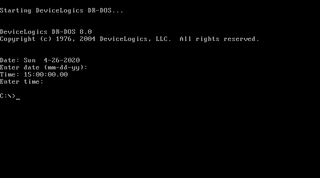 W
WDR-DOS is an operating system of the DOS family, written for IBM PC-compatible personal computers. It was originally developed by Gary A. Kildall's Digital Research and derived from Concurrent PC DOS 6.0, which was an advanced successor of CP/M-86. As ownership changed, various later versions were produced with names including Novell DOS and Caldera OpenDOS.
 W
WChrome OS is a Gentoo Linux–based operating system designed by Google. It is derived from the free software Chromium OS and uses the Google Chrome web browser as its principal user interface.
 W
WMS-DOS is an operating system for x86-based personal computers mostly developed by Microsoft. Collectively, MS-DOS, its rebranding as IBM PC DOS, and some operating systems attempting to be compatible with MS-DOS, are sometimes referred to as "DOS". MS-DOS was the main operating system for IBM PC compatible personal computers during the 1980s, from which point it was gradually superseded by operating systems offering a graphical user interface (GUI), in various generations of the graphical Microsoft Windows operating system.
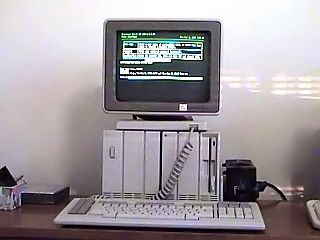 W
WThe Convergent Technologies Operating System, also known variously as CTOS, BTOS and STARSYS, was a modular, message-passing, multiprocess-based operating system.
 W
WDR-DOS is an operating system of the DOS family, written for IBM PC-compatible personal computers. It was originally developed by Gary A. Kildall's Digital Research and derived from Concurrent PC DOS 6.0, which was an advanced successor of CP/M-86. As ownership changed, various later versions were produced with names including Novell DOS and Caldera OpenDOS.
 W
WThe Atari Portfolio is an IBM PC-compatible palmtop PC, released by Atari Corporation in June 1989. This makes it the world's first palmtop computer.
 W
WDR-DOS is an operating system of the DOS family, written for IBM PC-compatible personal computers. It was originally developed by Gary A. Kildall's Digital Research and derived from Concurrent PC DOS 6.0, which was an advanced successor of CP/M-86. As ownership changed, various later versions were produced with names including Novell DOS and Caldera OpenDOS.
 W
WDR-DOS is an operating system of the DOS family, written for IBM PC-compatible personal computers. It was originally developed by Gary A. Kildall's Digital Research and derived from Concurrent PC DOS 6.0, which was an advanced successor of CP/M-86. As ownership changed, various later versions were produced with names including Novell DOS and Caldera OpenDOS.
 W
WDR-DOS is an operating system of the DOS family, written for IBM PC-compatible personal computers. It was originally developed by Gary A. Kildall's Digital Research and derived from Concurrent PC DOS 6.0, which was an advanced successor of CP/M-86. As ownership changed, various later versions were produced with names including Novell DOS and Caldera OpenDOS.
 W
WDR-DOS is an operating system of the DOS family, written for IBM PC-compatible personal computers. It was originally developed by Gary A. Kildall's Digital Research and derived from Concurrent PC DOS 6.0, which was an advanced successor of CP/M-86. As ownership changed, various later versions were produced with names including Novell DOS and Caldera OpenDOS.
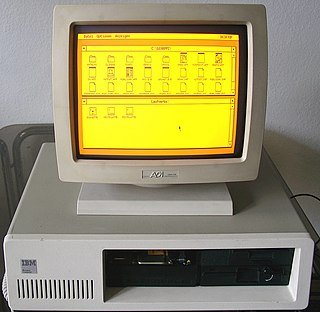 W
WGEM is an operating environment which was created by Digital Research (DRI) since 1984 for use with the DOS operating system on Intel 8088 and Motorola 68000 microprocessors.
 W
WGEOS is a discontinued operating system from Berkeley Softworks. Originally designed for the Commodore 64 with its version being released in 1986, enhanced versions of GEOS later became available in 1987 for the Commodore 128 and in 1988 for the Apple II family of computers. A lesser-known version was also released for the Commodore Plus/4.
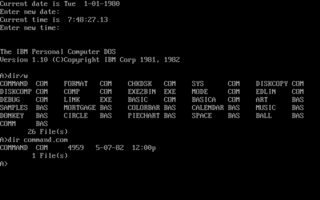 W
WIBM PC DOS, an acronym for IBM personal computer disk operating system, is a discontinued operating system for the IBM Personal Computer, manufactured and sold by IBM from the early 1980s into the 2000s.
 W
WiOS 10 is the tenth major release of the iOS mobile operating system developed by Apple Inc., being the successor to iOS 9. It was announced at the company's Worldwide Developers Conference on June 13, 2016, and was released on September 13, that year. It was succeeded by iOS 11 on September 19, 2017.
 W
WMenuetOS is an operating system with a monolithic preemptive, real-time kernel written in FASM assembly language. The system also includes video drivers. It runs on 64-bit and 32-bit x86 architecture computers. Its author is Ville M. Turjanmaa. It has a graphical desktop, games, and networking abilities. One distinctive feature is that it fits on one 1.44 MB floppy disk. On an Intel Pentium MMX 200 MHz it has been known to boot in 5 seconds.
 W
WMS-DOS is an operating system for x86-based personal computers mostly developed by Microsoft. Collectively, MS-DOS, its rebranding as IBM PC DOS, and some operating systems attempting to be compatible with MS-DOS, are sometimes referred to as "DOS". MS-DOS was the main operating system for IBM PC compatible personal computers during the 1980s, from which point it was gradually superseded by operating systems offering a graphical user interface (GUI), in various generations of the graphical Microsoft Windows operating system.
 W
WMS-DOS 4.0 was a multitasking release of MS-DOS developed by Microsoft based on MS-DOS 2.0. Lack of interest from OEMs, particularly IBM, led to it being released only in a scaled-back form. It is sometimes referred to as European MS-DOS 4.0, as it was primarily used there. It should not be confused with PC DOS 4.00 or MS-DOS 4.01 and later, which did not contain the multi-tasking features.
 W
WMultiuser DOS is a real-time multi-user multi-tasking operating system for IBM PC-compatible microcomputers.
 W
WThe Nintendo Switch system software is an updatable firmware and operating system used by the Nintendo Switch video game console. Its main portion is the HOME screen, consisting of the top bar, the screenshot viewer ("Album"), and shortcuts to the Nintendo eShop, News, and Settings.
 W
WDR-DOS is an operating system of the DOS family, written for IBM PC-compatible personal computers. It was originally developed by Gary A. Kildall's Digital Research and derived from Concurrent PC DOS 6.0, which was an advanced successor of CP/M-86. As ownership changed, various later versions were produced with names including Novell DOS and Caldera OpenDOS.
 W
WDR-DOS is an operating system of the DOS family, written for IBM PC-compatible personal computers. It was originally developed by Gary A. Kildall's Digital Research and derived from Concurrent PC DOS 6.0, which was an advanced successor of CP/M-86. As ownership changed, various later versions were produced with names including Novell DOS and Caldera OpenDOS.
 W
WOpenVMS is a multi-user, multiprocessing virtual memory-based operating system designed for use in time-sharing, batch processing, and transaction processing. It was first released by Digital Equipment Corporation in 1977 as VAX/VMS for its series of VAX minicomputers. Since 2014 OpenVMS is developed and supported by a company named VMS Software Inc. (VSI).
 W
WDR-DOS is an operating system of the DOS family, written for IBM PC-compatible personal computers. It was originally developed by Gary A. Kildall's Digital Research and derived from Concurrent PC DOS 6.0, which was an advanced successor of CP/M-86. As ownership changed, various later versions were produced with names including Novell DOS and Caldera OpenDOS.
 W
WThe PlayStation 3 system software (XrossMediaBar) is the updatable firmware and operating system of the PlayStation 3. The base operating used by Sony for the PlayStation 3 is a fork of both FreeBSD and NetBSD called CellOS.
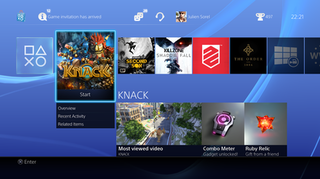 W
WThe PlayStation 4 system software is the updatable firmware and operating system of the PlayStation 4. The operating system is Orbis OS, based on FreeBSD 9.
 W
WPRIMOS is an operating system developed during the 1970s by Prime Computer for its minicomputer systems. It rapidly gained popularity and by the mid-1980s was a serious contender as a mainline minicomputer operating system.
 W
W86-DOS is a discontinued operating system developed and marketed by Seattle Computer Products (SCP) for its Intel 8086-based computer kit. Initially known as QDOS, the name was changed to 86-DOS once SCP started licensing the operating system in 1980.
 W
WQNX is a commercial Unix-like real-time operating system, aimed primarily at the embedded systems market. QNX was one of the first commercially successful microkernel operating systems. As of 2020, it is used in a variety of devices including cars and mobile phones.
 W
WMS-DOS is an operating system for x86-based personal computers mostly developed by Microsoft. Collectively, MS-DOS, its rebranding as IBM PC DOS, and some operating systems attempting to be compatible with MS-DOS, are sometimes referred to as "DOS". MS-DOS was the main operating system for IBM PC compatible personal computers during the 1980s, from which point it was gradually superseded by operating systems offering a graphical user interface (GUI), in various generations of the graphical Microsoft Windows operating system.
 W
WSkyOS is a discontinued prototype commercial, proprietary, graphical desktop operating system written for the x86 computer architecture. As of January 30, 2009 development was halted with no plans to resume its development. In August 2013, developer Robert Szeleney announced the release of a public beta on the SkyOS website. This allows public users to download a Live CD of the SkyOS operating system, for testing and to optionally install the system.
 W
WMS-DOS is an operating system for x86-based personal computers mostly developed by Microsoft. Collectively, MS-DOS, its rebranding as IBM PC DOS, and some operating systems attempting to be compatible with MS-DOS, are sometimes referred to as "DOS". MS-DOS was the main operating system for IBM PC compatible personal computers during the 1980s, from which point it was gradually superseded by operating systems offering a graphical user interface (GUI), in various generations of the graphical Microsoft Windows operating system.
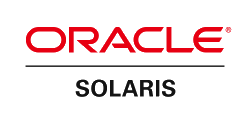 W
WSolaris is a proprietary Unix operating system originally developed by Sun Microsystems. It superseded the company's earlier SunOS in 1993. In 2010, after the Sun acquisition by Oracle, it was renamed Oracle Solaris.
 W
WSystem 6 is a graphical user interface-based operating system for Macintosh computers. It was released in 1988 by Apple Computer, Inc. and is part of the classic Mac OS series of operating systems. System 6 was included with all new Macintosh computers until it was succeeded by System 7 in 1991. The boxed version of System 6 cost $49 when introduced. System 6 is classed as a monolithic operating system. It features an improved MultiFinder, which allows for co-operative multitasking.
 W
WFM Towns system is a Japanese variant of PC, built by Fujitsu from February 1989 to the summer of 1997. It started as a proprietary PC variant intended for multimedia applications and PC games, but later became more compatible with IBM PC compatibles. In 1993, the FM Towns Marty was released, a game console compatible with existing FM Towns games.
 W
WtvOS is an operating system developed by Apple Inc. for the 2nd generation and later Apple TV digital media player. It is based on the iOS operating system and has many similar frameworks, technologies, and concepts.
 W
WThe Wii system software is a discontinued set of updatable firmware versions and a software frontend on the Wii home video game console. Updates, which can be downloaded over the Internet or read from a game disc, allowed Nintendo to add additional features and software, as well as to patch security vulnerabilities used by users to load homebrew software. When a new update became available, Nintendo sent a message to the Wii Message Board of Internet-connected systems notifying them of the available update.
 W
WThe Wii U system software is the official firmware version and operating system for Nintendo's Wii U home video game console. Nintendo maintains the Wii U's systemwide features and applications by offering system software updates via the Internet. Updates are optional to each console owner, but may be required in order to retain interoperability with Nintendo's online services. Each update is cumulative, including all changes from previous updates.
 W
WWindows 10 is a series of operating systems developed by Microsoft and released as part of its Windows NT family of operating systems. It is the successor to Windows 8.1, released nearly two years earlier, and was released to manufacturing on July 15, 2015, and broadly released for the general public on July 29, 2015. Windows 10 was made available for download via MSDN and Technet, and as a free upgrade for retail copies of Windows 8 via the Windows Store. Windows 10 receives new builds on an ongoing basis, which are available at no additional cost to users, in addition to additional test builds of Windows 10, which are available to Windows Insiders. Devices in enterprise environments can receive these updates at a slower pace, or use long-term support milestones that only receive critical updates, such as security patches, over their ten-year lifespan of extended support.